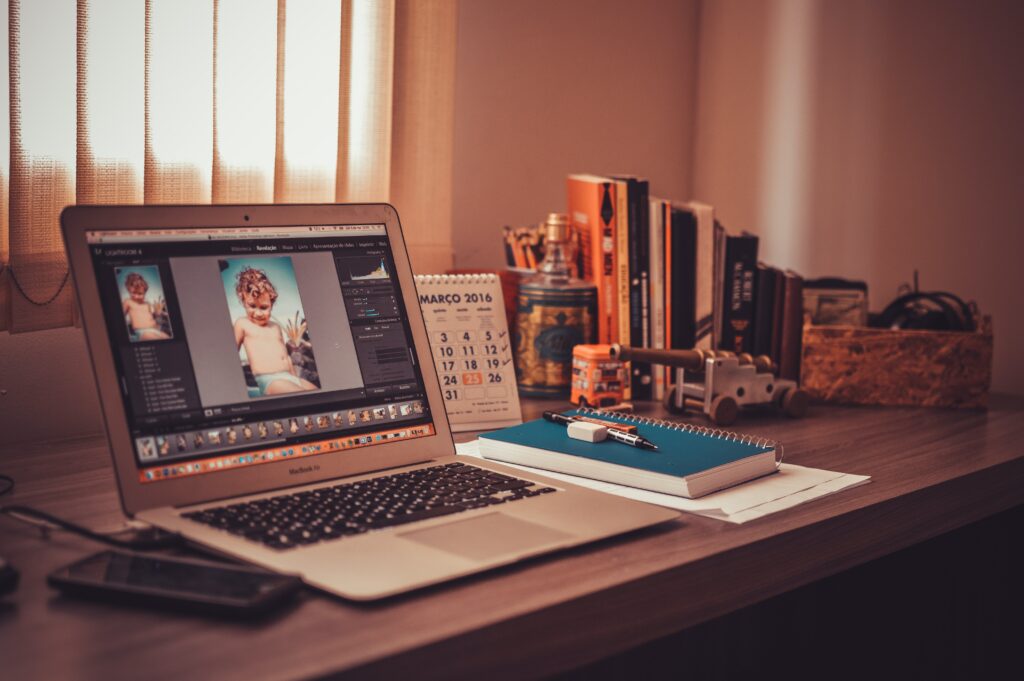Why is My PSD File so Big?

A lot of factors can go into a Photoshop file being unreasonably large. In this article, we’re going over what contributes to the file size and steps you can take to reducing it. We’ll also mention an alternative to using PSD files that may save you a lot of space as well as time! If you have more tips for reducing file size, let us know in the comments!
Unnecessary Layers
Every layer that you have adds to the file size of your PSD. Before saving your file, you should delete any unnecessary layers. If you’ve experimented around with some ideas and abandoned them, you should delete those layers. Every extra shape and adjustment layer adds to the file size, and any large project probably has more than a few of these layers.
Lower Your DPI
300 DPI is enough for most uses, so if you’re using anything about that without a good reason, it’s unnecessarily adding to your project’s file size. Similarly, you can reduce your resolution. Ask yourself if your canvas really needs to be as large as it does! If your project is 3000×3000 pixels, then see if you can make it just 1000×1000 instead and still have enough resolution. For example, Instagram has a maximum image size of 1080×1080 so there’s no point in working with a Photoshop file larger than that if your only goal is to post on Instagram.

Hide Your Layers
This one probably sounds a bit funny but Photoshop files actually spends a fair bit of resources on file previews. Generating that thumbnail image can add some file size, but there are some ways to hide this. Of course you can turn off all of the layers before saving, or put them into a folder and hide the folder. You can also just toggle on a solid white layer on top of everything else, so that the preview is solid white. I tried the white layer technique on one of my projects and it brought my file size down from 7.16 MB to 5.11 MB, a whole 29% reduction!
Bake in Layers
Photoshop is great because you can create layers that are non-destructive. But smart objects and unrasterized layers can add a lot of file size. If you’re confident in some of your layers, you can save space by rasterizing smart objects and merging layers. For example, if you’ve created several shapes in order to make a frame around your image, you can merge these shapes. This may also make the object easier to edit, but it definitely saves file space. Doing this may also make your project a bit cleaner. Just don’t mess up a layer you’re still working on, and keep a backup in a different file if you’re really concerned about it.
Alternative Ways to Edit
We recently talked about a new AI-powered photo editing tool called Facet. In case you missed it, it’s a game-changing editing tool that lets you easily edit backgrounds and foregrounds separately, apply similar edits to more than one image, and so much more. While a project is in Facet, it’s not a file, it’s what’s called a pattern. This pattern contains information about all of the actions such as edits and background removal, and it can apply this pattern to multiple images. This is one reason why Facet’s multi-image editing is so powerful and easy to use. You can’t just apply a file to another image, but you can apply a Facet pattern to one!
You can always export your Facet project as a PSD if you need to do additional editing, but using Facet is a great way to save on file space. And yes, there are collaborative features, which means you don’t need to try to send a massive PSD file to your associate.
Still need to make Photoshop work better for you? Check out these other articles about Photoshop that you might like:
- How to Make Photoshop Faster
- All of the Different Types of Files You Can Open in Photoshop
- The History of Photoshop – Photoshop Through the Years








